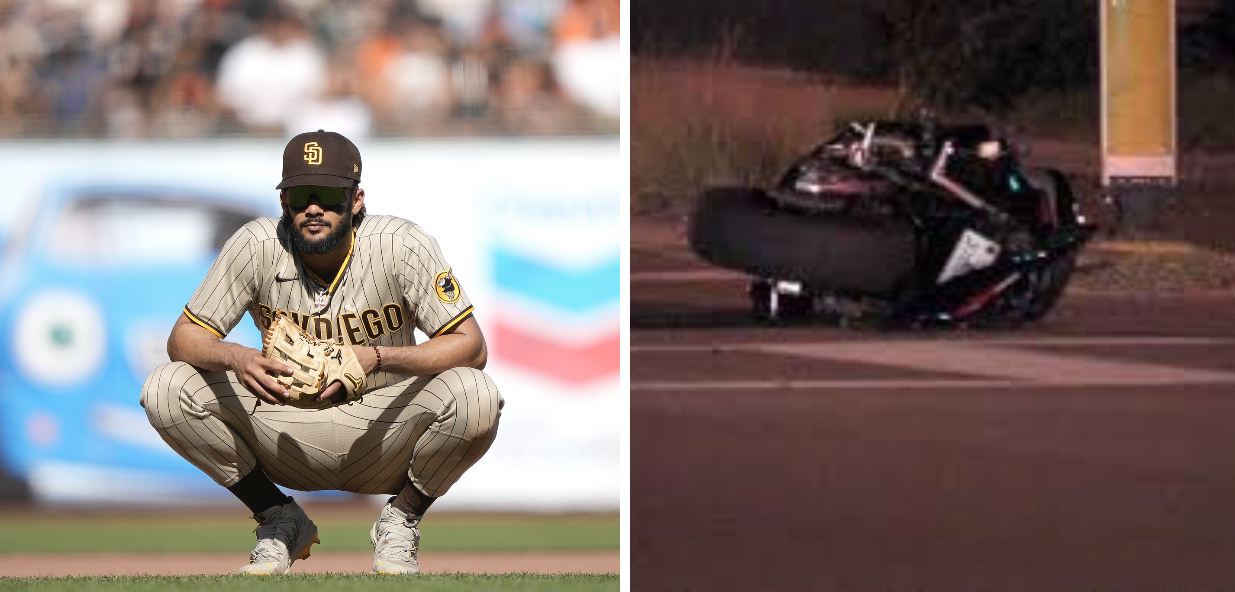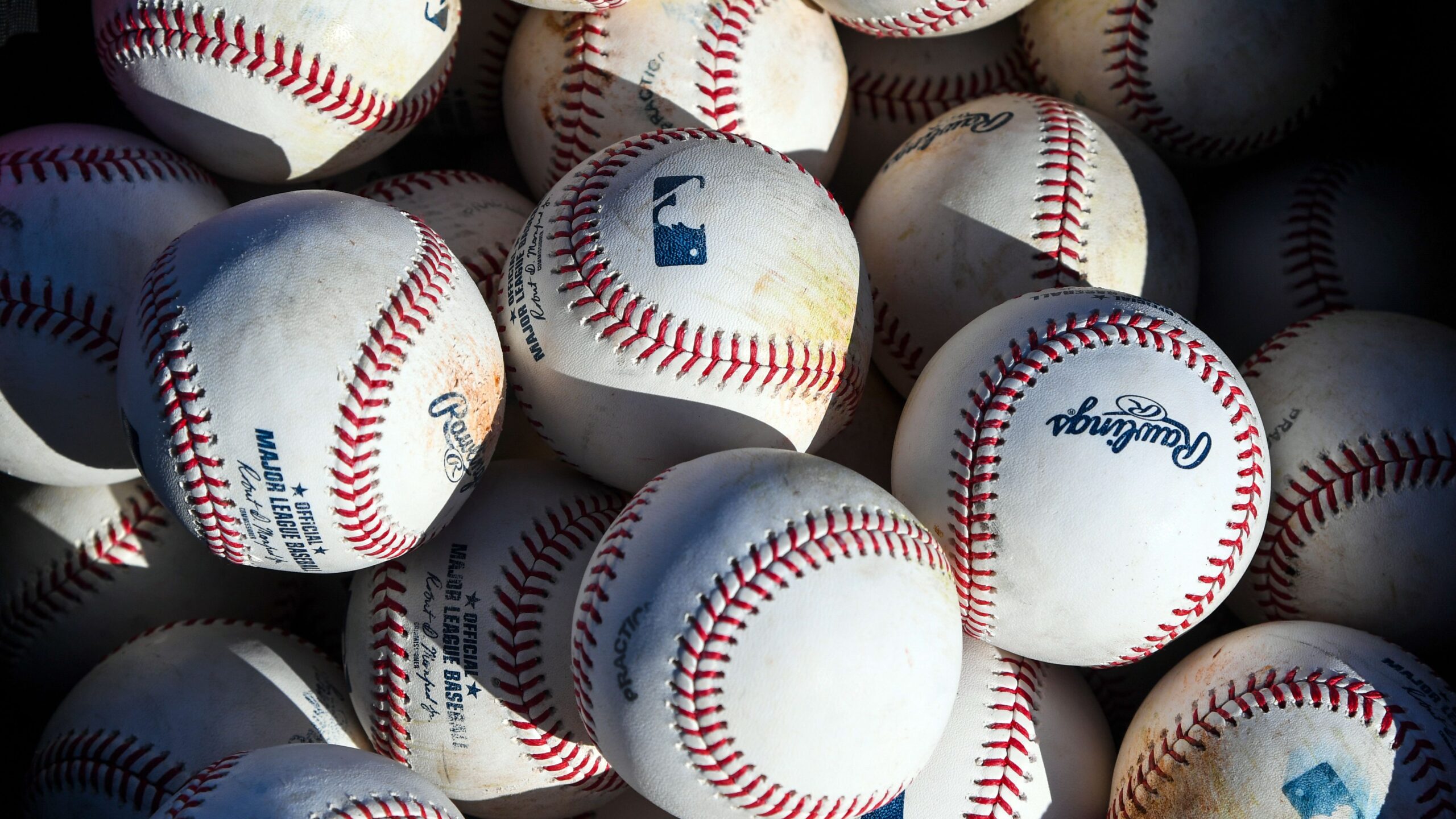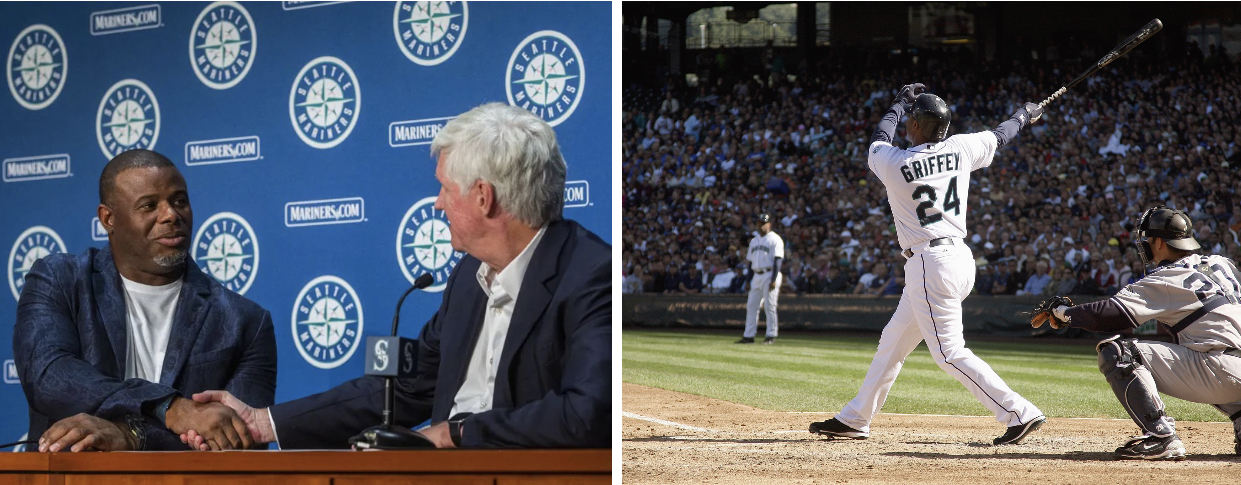In our lifetime, there are athletes who define an era. The most memorable are those who provided a level of excitement that can only be measured by pure greatness. In 1987, there was a kid who had all of the makings of baseball’s next superstar. A supremely gifted athlete, whose physical tools were morphed into baseball skills and displayed each and every day on the diamond. The kid soon became the man, dazzling us all and becoming one of the greatest players in Major League history. His name is Ken Griffey. But not the Griffey who was a part of Cincinnati’s Big Red Machine of the 1970’s; no that is Ken Griffey Sr. And don’t get me wrong, Big Ken was more than solid, boasting a carer batting averge of .296. However it was his son, Junior, that took the family name to another level.
Growing up in Cincinnati, Ken Griffey Jr. was a standout in all sports, most notably football. The 17-year old 6-foot-3, 200 pound senior garnered countless offers to play college football. However it was his .478 batting average and the pedigree of his father that had baseball scouts salivating. Junior possessed speed, power, arm strength and a defensive prowess that only comes along once in a generation. He was the true definition of a five-tool player. In the 1987 MLB Draft, the Seattle Mariners selected Junior with the first-overall pick. He was signed for $160,000. To say it was a bargain is beyond an understatement.
Griffey started in the minors in the Northwest League with the Bellingham Bells. He dominated the circuit by hitting .313 with 14 home runs and 13 steals, finishing second in the league in on-base percentage- and this is all at the age of 17, with no college experience, competing against grown men. The scouting reports were perceived as mythical as “The Kid” was becoming a commodity. Ken Griffey Jr. was labeled as a can’t miss prospect who had the world in the palm of his hand.
With a high level of success, especially at such an early age, also comes a price. The fee in Griffey’s case was being away from friends and family, and sometimes feeling isolated from the life of a normal 17-year old boy. He grew depressed and lonely, while also feeling the pressure to live up to the hype on the baseball field. So much so, that the soon-to-be baseball star felt as if he could no longer go on. In January of 1988 it all came to its breaking point.
Griffey attempted suicide, swallowing an entire bottle of aspirin, 277 tablets in all. There is no question that this would have taken his life, had it not been for the mother of his girlfriend who raced him to the hospital where doctors pumped his stomach and got him to the ICU. He was fortunate, and so was his family and the rest of the sports world as he recovered and was able to return to the diamond.
He would go on to destroy Single A competition, hitting .338 with 11 home runs and 32 stolen bases. He would next go on to prove himself even further on the Double A level as he worked his way up to the show in 1989. At the age of only 19, Ken Griffey Jr. was the starting centerfielder for the Seattle Mariners. In his rookie season he would hit .264 with 16 homers and swipe 16 bases. From there, it was a continuous rise to greatness as the very next season he would eclipse the .300 batting average plateau and would also hit 22 home runs. From 1990 through 1999, Griffey hit .302 and smashed 382 homers, leading the American League in home runs four times. But his work was not only done at the plate as he would also win 10 Gold Glove awards in 10 years. During that decade, his magnetic personality and genuine love for the game made him one of baseball's most beloved and revered players. He was a marketing cash cow for MLB and his popularity crossed racial lines.
In 2000, Griffey was traded back to the city that he called home, to play for the Cincinnati Reds. Although it was a love affair to be back in the city that raised him, Junior struggled through a long series of health problems, playing in just 70 games in 2002, 53 in 2003, and 83 in 2004. He was still a dangerous power hitter, but the dynamite kid was obviously not the same. In 2009 he would return to the pacific northwest to have one final curtain call with the team who provided him with a stage for greatness, Seattle. He would only hit .208 through his last two seasons but would still knock in 19 homers, demonstrating that he still had some power left in his swing. He would finish his career with a .278 average and 660 home runs.
The one aspect that does not seem to earn much of a mention when speaking of the greats of the 90’s is that Griffey did this at a time where steroid use was being introduced to the game. While so many of his compadres were juicing to heighten their performances and most importantly recover quicker from injuries, the kid stayed natural and produced at an extreme level with his God-given ability. Thank the heavens that on that day in 1988 that someone was there to keep Junior alive.
We are eternally grateful to have witnessed such an amazing player and athlete. We tip our caps to the one many called "Junior"; the one we simply call "The Kid." #RESPECT



